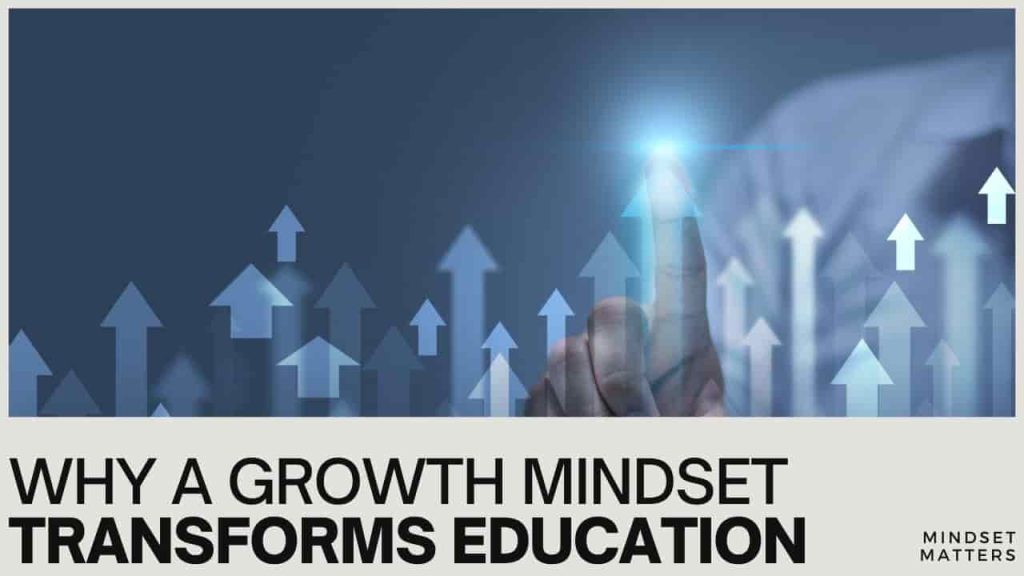
Why Growth Mindset Matters in Education
The concept of a growth mindset has revolutionized how educators approach teaching and learning. Coined by psychologist Carol Dweck, a growth mindset is the belief that abilities and intelligence can be developed through dedication and hard work, rather than seeing them as fixed traits. In education, nurturing a growth mindset can transform how students approach challenges, failures, and overall learning. It encourages them to embrace learning as a continuous journey, enhancing resilience, motivation, and self-confidence.
Understanding Growth Mindset vs. Fixed Mindset
A growth mindset encourages students to see challenges as opportunities for improvement. In contrast, a fixed mindset views abilities as set in stone, leading students to believe they are either “good” or “bad” at something with little room for change. When students with a fixed mindset encounter obstacles, they may give up more quickly, fearing that failure defines them. In contrast, students with a growth mindset understand that effort, strategies, and persistence can lead to improvement and mastery over time.
The Benefits of Growth Mindset in the Classroom
- Enhances Academic Achievement
Students with a growth mindset are more likely to engage deeply with learning materials. Instead of avoiding difficult subjects or tasks, they’re inclined to persevere, leading to better academic outcomes. This is especially impactful in challenging subjects like math and science, where the initial struggle can feel daunting. With a growth mindset, students become more willing to ask questions, take on difficult tasks, and push their limits.
- Builds Resilience and Reduces Fear of Failure
A growth mindset helps students to view failure not as a negative outcome but as a learning opportunity. They learn to analyze mistakes, understand where they went wrong, and use these insights to improve. This attitude is invaluable because it builds resilience. Students who learn to embrace failure become less anxious about taking risks, fostering a more positive approach to problem-solving and creativity.
- Fosters Intrinsic Motivation and Lifelong Learning
When students focus on the process of learning rather than solely on outcomes like grades, they become more intrinsically motivated. They start to appreciate learning for its own sake and become lifelong learners. This intrinsic motivation is a key driver of academic and personal success, as students who enjoy learning are more likely to continue exploring and developing their skills even outside the classroom.
- Encourages Collaboration and Openness to Feedback
In a growth mindset-oriented classroom, students are more open to collaboration and constructive criticism. They understand that feedback is not a critique of their abilities but a way to improve. This openness helps them build stronger peer relationships and fosters a positive, collaborative learning environment where students support one another in achieving their goals.
How Valdymas College of Advanced Studies Cultivates a Growth Mindset
At Valdymas College, we integrate growth mindset principles across our educational programs to empower our students to become resilient, self-motivated learners:
Personalized Learning Paths: By offering individualized learning plans, we ensure that students can progress at their own pace. This encourages students to focus on their development, celebrating their unique growth journeys rather than comparing themselves to others.
Reflective Practices: Reflection is a core component of our curriculum. Weekly assessments allow students to see where they excel and identify areas for improvement. This regular self-reflection helps students see their growth over time and appreciate the progress they’ve made through effort.
Supportive Faculty and Mentorship Programs: Faculty at Valdymas College model the growth mindset by showing students that they, too, are lifelong learners. Through mentorship programs, our educators encourage students to view challenges positively and support them in developing strategies for overcoming obstacles.
Celebrating Effort and Improvement: We celebrate not only high-achievers but also those who demonstrate significant improvement or perseverance. Recognizing effort builds a culture where students value hard work and resilience, reinforcing the idea that growth is possible for everyone.
Practical Strategies to Develop a Growth Mindset in Students
Encouraging Positive Language: Reinforcing phrases like “You worked hard on that!” or “You’re improving” helps students understand that effort is valued. Avoid labeling students as “smart” or “talented” to prevent a fixed mindset from developing.
Teaching About the Brain’s Potential: Educating students on neuroplasticity—the brain’s ability to change and grow with practice—can inspire them to believe in their potential for improvement.
Reframing Challenges as Opportunities: Emphasize that struggles and mistakes are not signs of weakness but natural parts of the learning process. Encourage students to approach these moments with curiosity rather than fear.
Conclusion
The growth mindset is essential in education for building students who are resilient, motivated, and adaptable. At Valdymas College of Advanced Studies, fostering a growth mindset is an integral part of our approach to learning. By creating an environment that values perseverance, effort, and continuous improvement, we prepare our students not only for academic success but also for the many challenges they will face in life. With a growth mindset, students become equipped to overcome obstacles, adapt to change, and continue learning far beyond the classroom walls.
References
- Dweck, Carol S. Mindset: The New Psychology of Success. Random House, 2006.
- Kolawole, Joshua. Transforming the Impossible, 2023.



